1. How does Melanin Form?
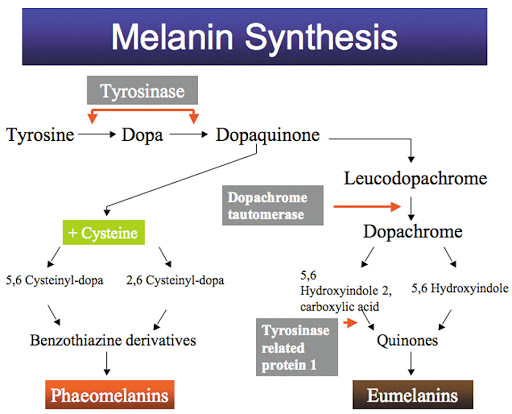
1.1 Three Basic Substances for Melanin Formation
- Tyrosine is the main raw material for the formation of melanin.
- Tyrosinase is the main rate-limiting enzyme for the conversion of tyrosine into melanin. It is a composition of copper and protein.
- Under the action of tyrosinase, tyrosine produces melanin. The action is an oxidation process and must be combined with oxygen to be converted into melanin.
1.2 Mechanism of Melanin Formation
It is generally believed that tyrosine on melanosomes in nuclide cells is synthesized by catalyzing tyrosinase. The oxidation of tyrosine to melanin is relatively complicated. Ultraviolet rays can increase the activity of tyrosinase and melanocytes, thus promoting the oxidation, which will deepen and even worsen the original pigmentation.
The melanin formation of skin includes a series of complex physiological and biochemical processes, such as the migration of melanocytes, the division and maturation of melanocytes, the formation of melanosome, the operation of melanin granules and the excretion of melanin.
2. Whitening Ingredients
- Resorcinol Compounds
Glabridin is an important component of licorice flavonoid. It belongs to isoflavanes. Pure glabridin is colorless or light yellow powder. It is insoluble in water, but easily soluble in organic solvents, such as methanol, ethanol ether, propylene glycol, etc.
Glabridin is known as Whitening Gold in cosmetics. It is highly effective in anti-oxidation. It can effectively inhibit the activities of enzymes in melanin production, especially tyrosine enzyme.
Resveratrol is colorless powder with chemical name (E) -5- [2- (4-hydroxyphenyl) -vinyl] -1,3-benzenediol. It is insoluble in water, soluble in polar solvents, including ethanol, ethyl acetate, acetone and so on. Resveratrol has strong light instability and thermal instability. It produces fluorescence under ultraviolet irradiation. When pH is more than 10, the stability is poor. In the presence of ferric chloride-potassium ferricyanide solution, it shows blue; in the presence of alkaline solution such as ammonia, it is red.
Resveratrol is a non-flavonoid polyphenolic compound containing a stilbene structure. It was first isolated from the roots of Veratrum glabra in 1940. Under natural conditions, it exists in two forms: free state and glycoside. Resveratrol can achieve whitening effect by inhibiting the expression of tyrosinase mRNA in melanocytes and TRP-1. Resveratrol can also inhibit the proliferation of B16 melanocytes.
- Alpha Hydroxy Acids and Their Derivatives
Alpha hydroxy acids is α-hydroxy acid, abbreviated as AHAs. It includes citric acid, malic acid, pyruvic acid, lactic acid, glycolic acid, tartaric acid, gluconic acid, etc. AHAs exists in various fruits, so it is collectively called for fruit acid.
AHAs is mainly used to improve skin condition by penetrating into the stratum corneum. It can accelerate cell renewal speed, and promote cell death and detachment. It has effect of making skin surface smooth, delicate and soft. Also it reduces skin pigmentation and spots.
- Vitamin C and Its Derivatives
Vitamin C, also known as ascorbic acid, is the most representative melanin production inhibitor. It plays a role of oxidation and reduction in the body. There are two processes. On the one hand, when tyrosinase catalyzes the reaction, it can reduce dopaquinone, the intermediate of melanin, thus inhibiting melanin production. Another role is to reduce the dark-colored oxidized melanin to light-colored reduced melanin.
The color of melanin is determined by quinone structure in melanin molecule. Vitamin C has the property of reducing agent. It can reduce quinone structure to phenol structure. Ascorbic acid can whiten skin but is easily discolored and unstable to heat.However vitamin C derivatives are relatively stable, including ascorbic acid 2-glucoside, sodium ascorbyl phosphate, magnesium ascorbyl phosphate.
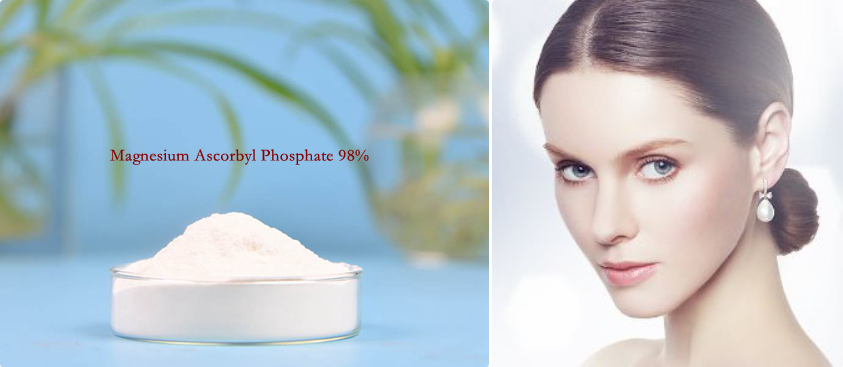
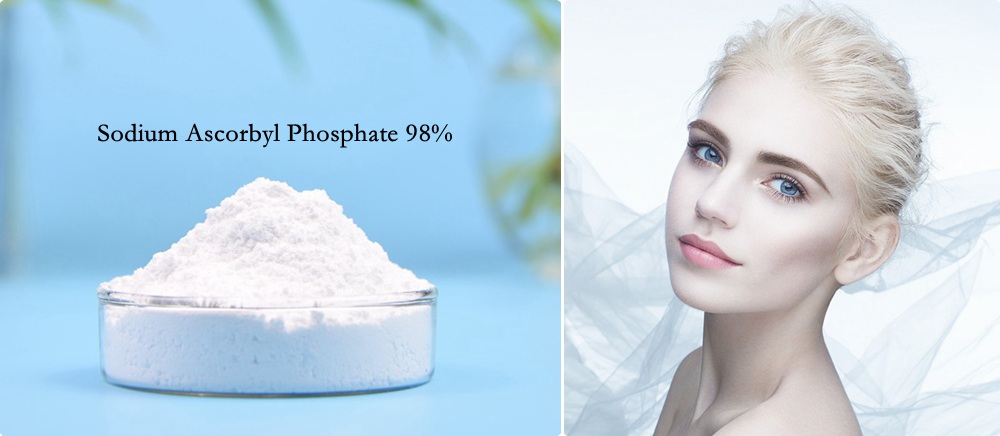
- Arbutin and Its Derivatives
Arbutin’s chemical name is hydroquinone-β-glucopyranoside. It is a natural active substance isolated from plants, and can also be obtained by chemical synthesis. Arbutin is white powder, easily soluble in water and polar solvents, but insoluble in non-polar solvents. From its molecular structure, arbutin is actually a derivative of hydroquinone.
Arbutin is a tyrosinase inhibitor; it can inhibit tyrosine activity in a concentration range without melanocyte cytotoxicity. Then it blocks the synthesis of dopa and dopaquinone, and thus inhibits melanin production.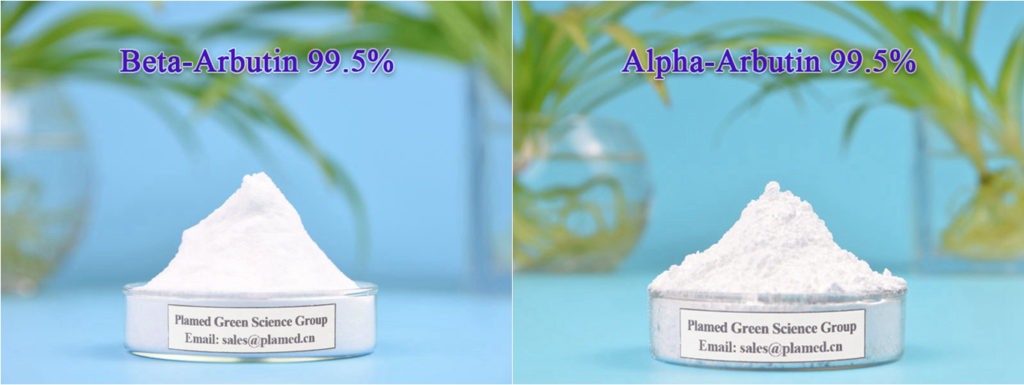
Kojic acid is a biological preparation with a molecular weight of 142.11. It is white powder and melting point is 152 °C. It is soluble in water, ethanol and ethyl acetate, slightly soluble in ether, chloroform and pyridine. Kojic acid shows special red color with iron chloride.
After entering skin cells, kojic acid can complex with copper ions in the cells, and change the structure of tyrosinase, then prevent tyrosinase’s activation, and thus inhibit melanin formation. Kojic acid has poor stability to light and heat. It is easy to be oxidized and discolor. Also it is easy to chelate metal ions, and has poor skin absorption.
- Linoleic Acid
Linoleic acid is an unsaturated fatty acid; it is abundant in vegetable oil. Its content is higher in membrane lipid of cell membrane. It has been reported that linoleic acid promotes decomposition of tyrosinase to whiten skin. Thereby it reduces amount of tyrosinase, and ultimately reducing melanin synthesis. Linoleic acid can also promote skin metabolism.
Niacinamide, also known as vitamin B3, usually accelerates metabolism of stratum corneum. It promotes shedding of keratinocytes containing melanin, and acts on melanin that has been produced. Also niacinamide reduces melanin’s migration to surface cells, then promotes synthesis and improvement of epidermal proteins.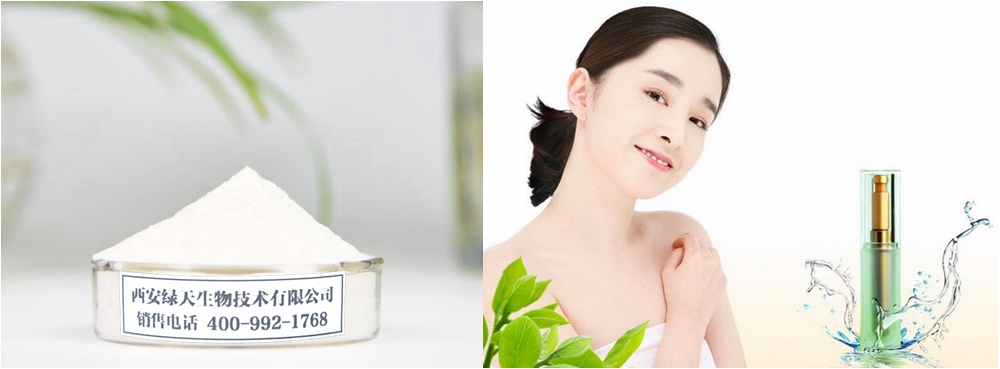
- Pantothenic Acid Derivative
Pantothenic acid derivatives can effectively inhibit tyrosinase activity. Its has significant effect for melanin removal, and has great skin whitening effect.
- Biological Whitening Preparation
There are a variety of substances that reduce production of skin melanin and whiten skin. They can inhibit tyrosinase, and slow melanin.
- Natural Plant and Animal Extract
Animal extracts, such as placenta extract, pearl hydrolysate, etc., have been proven to have good skin whitening effect. Others such as superoxide dismutase (SOD) can also inhibit pigmentation.
The application of plant extracts caters to people’s consciousness of returning to nature. Many Chinese herbal medicines or other natural plant extracts have specific active ingredients. They can inhibit activation of tyrosinase and block melanin formation. Common and typical extracts are angelica, scutellaria baicalensis, licorice and other extracts.
Plamed aims to develop natural cosmetics raw materials. Plamed whitening ingredients are high content and low cost.
If you want to buy whitening ingredients, please contact us in following way.
Rae Wong
Tel: +86-29-8821 5350
Mobile: +86 180 6683 3765
Email: sale@plamed.cn
Whatsapp: +86 180 6683 3765
Skype: plamed06
Wechat: 18066833765








